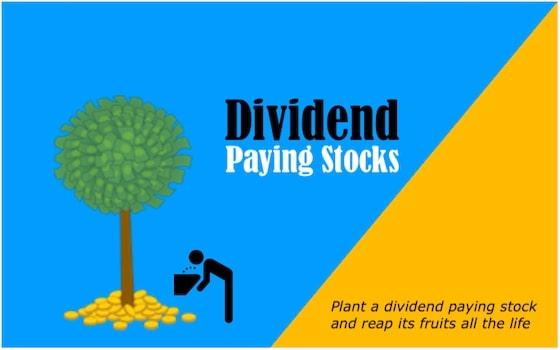Investing in Dividend paying stocks | Passive Income
While the inflation rate is increasing day by day and making an upward trend, it’s essential to make effective and inflation-proof investments. An investor can achieve this by Investing in Dividend paying stocks. Dividend paying stocks are stocks of those companies which pay regular dividends to investors. It works out like passive income. Regardless of whether the company’s stock price goes up or down, you would receive those dividend payments as long as the company continues to disburse them.
What is Dividend ?
Dividend is a portion of net income that a company distributes among its shareholders. The best thing about dividend paying stocks is they gain back their value during harsh market movements, making them a reliable option for risk investors on capital protection. This gives them a regular source of income which is similar to the interest they get while keeping money for a longer time.
There are several companies in the domestic equity market that pay dividends to investors on a regular basis. However, not all companies pay a dividend. Usually, the board of directors determines if a dividend is desirable for their particular company based on various financial and economic factors. Dividends are commonly paid in the form of cash distributions to the shareholders on a monthly, quarterly or yearly basis.
How to evaluate Dividend stocks ?
Before you buy any dividend stocks, it’s important to know how to evaluate them.
Dividend yield: This is the annualized dividend represented as a percentage of the stock price. For instance, if a company pays 100 Rs. in annualized dividends and the stock costs 200 Rs per share, then the dividend yield would be 5%. A higher-dividend yield is better, all other things being equal
Dividend payout ratio: This is the dividend as a percentage of a company’s earnings. If a company earns 10 Rs per share in net income and pays a 5 Rs per-share dividend, then the payout ratio is 50%. In general terms, the lower the payout ratio, the more sustainable a dividend should be.
Total return: This is the increase in stock price (known as capital gains) plus dividends paid. For example, if you pay 100 Rs for a stock that increases in value by 10 Rs and pays a 5 Rs dividend, then that 15 Rs you’ve gained is equivalent to a 15% total return.
Earnings per share (EPS): The EPS metric normalizes a company’s earnings to the per-share value. The best dividend stocks are companies that have shown the ability to regularly increase earnings per share over time and thus raise their dividend.
To check out stocks offering high dividend yields along with the company’s dividend history, visit the link below :
https://www.moneycontrol.com/stocks/marketstats/bsetopdiv/
Important dates to note for Investing in Dividend paying stocks
Investors need to be aware of some key dates:
Announcement date: This is the day the company announces its dividend plans.
Record date: Investors who are recorded as shareholders as of this day will receive the dividend payment.
Ex-dividend date: This is the day when shareholders who purchase the stock will no longer receive the next dividend payment.
Payment date: This is the day investors will receive the dividend payment.
Dividend yield trap
Inexperienced dividend investors often make the mistake of buying stocks with the highest dividend yields. While high-yield stocks aren’t bad, high yields can be the result of a stock’s price falling due to the risk of the dividend being cut. That’s called a dividend yield trap. It is equally important to beware of companies with extraordinarily high yields. As we have learned, if a company’s stock price continues to decline, its yield goes up. Some steps to avoid are :
- Avoid buying stocks based solely on dividend yield. If a company has a significantly higher yield than its peers, that’s often a sign of trouble, not opportunity.
- Use the payout ratios to gauge a dividend’s sustainability.
- Use a company’s dividend history — of both payout growth and yield — as a guide.
- Study the balance sheet, including debt, cash, and other assets and liabilities.
Final Takeaways : Investing in Dividend paying stocks
Dividend investing can be a great investment strategy. Dividends can have a big impact on your portfolio over time. They can help generate income during retirement or earlier and can also be reinvested to increase your total investment return. Dividend stocks generally possess less risk than non-dividend stocks. Still, before looking to adding up in investment portfolio strategy, an investor should familiarize themselves with both advantages and disadvantages of dividend investing.
Read also : Elliott Wave Theory | Technical Analysis Strategy ( https://thebrightdelights.com/elliott-wave-theory-technical-analysis-strategy/ )
